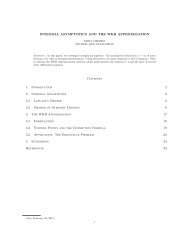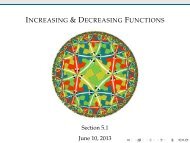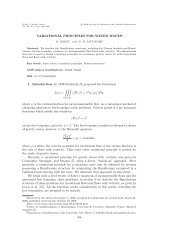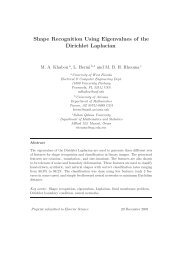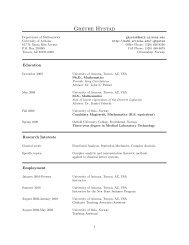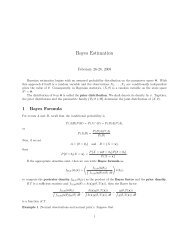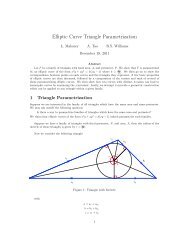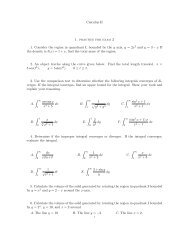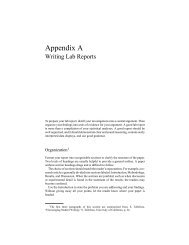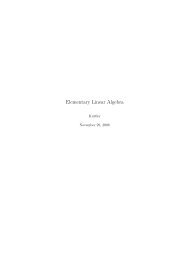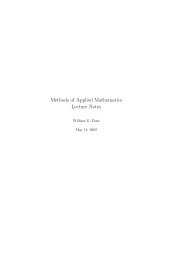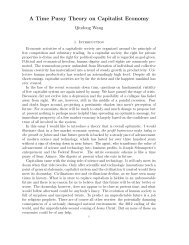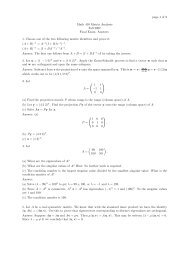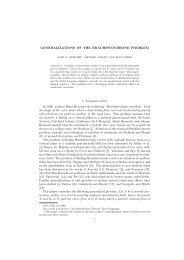Method of Moments
Method of Moments
Method of Moments
Create successful ePaper yourself
Turn your PDF publications into a flip-book with our unique Google optimized e-Paper software.
Introduction to the Science <strong>of</strong> Statistics<br />
The <strong>Method</strong> <strong>of</strong> <strong>Moments</strong><br />
In this situation, we have one parameter, namely<br />
. Thus, in step 1, we will only need to determine the first moment<br />
µ 1 = µ = k 1 ( )=<br />
1<br />
to find the method <strong>of</strong> moments estimator ˆ for .<br />
For step 2, we solve for as a function <strong>of</strong> the mean µ.<br />
= g 1 (µ) = µ<br />
µ 1 .<br />
Consequently, a method <strong>of</strong> moments estimate for<br />
mean ¯X.<br />
is obtained by replacing the distributional mean µ by the sample<br />
ˆ =<br />
¯X<br />
¯X 1 .<br />
A good estimator should have a small variance . To use the delta method to estimate the variance <strong>of</strong> ˆ,<br />
we compute<br />
g 0 1(µ) =<br />
✓<br />
1<br />
(µ 1) 2 , giving g0 1<br />
2ˆ ⇡ g 0 1(µ) 2 2<br />
n .<br />
◆<br />
=<br />
1<br />
1<br />
(<br />
1<br />
1) = ( 1) 2<br />
2 ( ( 1)) 2 = ( 1)2<br />
and find that ˆ has mean approximately equal to<br />
and variance<br />
2ˆ ⇡ g 0 1(µ) 2 2<br />
n =( 1)4 n( 1) 2 ( 2) = ( 1)2<br />
n( 2)<br />
As a example, let’s consider the case with<br />
=3and n = 100. Then,<br />
2ˆ ⇡ 3 · 22<br />
100 · 1 = 12<br />
100 = 3<br />
p<br />
3<br />
25 , ˆ ⇡<br />
5 =0.346.<br />
To simulate this, we first need to simulate Pareto random variables. Recall that the probability transform states that<br />
if the X i are independent Pareto random variables, then U i = F X (X i ) are independent uniform random variables on<br />
the interval [0, 1]. Thus, we can simulate X i with F 1<br />
X<br />
(U i). If<br />
u = F X (x) =1 x 3 , then x =(1 u) 1/3 = v 1/3 , where v =1 u.<br />
Note that if U i are uniform random variables on the interval [0, 1] then so are V i =1 U i . Consequently, 1/ p V 1 , 1/ p V 2 , ···<br />
have the appropriate Pareto distribution.<br />
> paretobar for (i in 1:1000){v mean(betahat)<br />
[1] 3.053254<br />
> sd(betahat)<br />
[1] 0.3200865<br />
197



